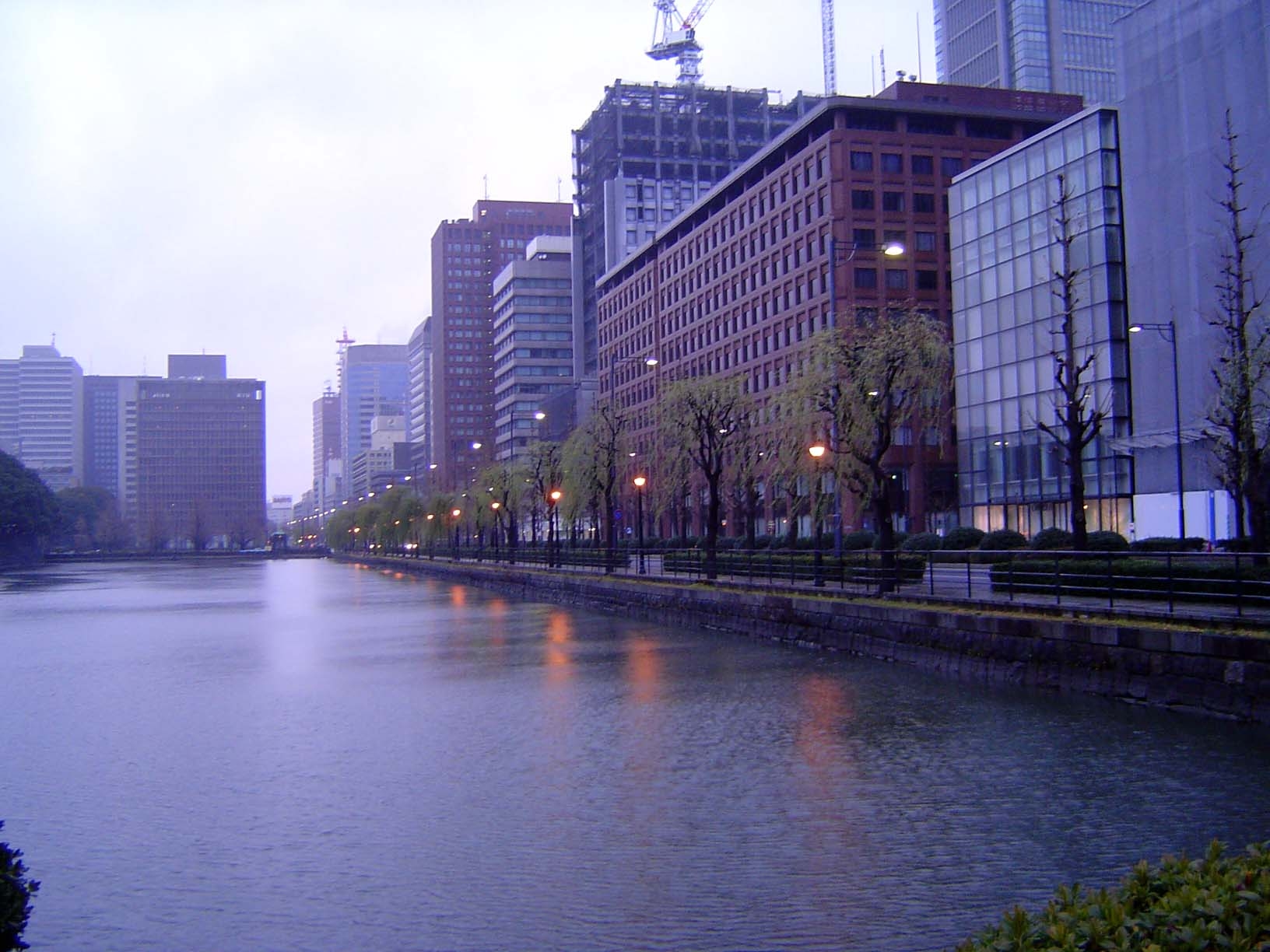
Tokyo's boundaries were expanded in 1932, and by 1941 the city had 6.3 million people. The boundaries were enlarged again in 1943, when the city was made co-extensive wth Tokyo Prefecture. Wartime hardship reduced the population to less than 4 million in 1946, but after the war the population rose to 6.3 million by 1950. By the 1980s, the city had doubled to 12 million, not counting that many again in adjoining areas. Hard times saw a decline in the city's population in the early 1990s, but that has been reversed, to some extent because land values have declined from their once-towering heights.
Off to the left, the Imperial Palace is hidden behind its moat and forest. On the right, Marunouchi, literally "within the walls," a name that alludes to a now-vanished palace wall that once enclosed this area. This is the same area that later became Mitsubishi Meadows—one of the world's great stories of real-estate speculation. Two blocks to the right is Tokyo Station.
The height limits that were rigidly enforced between 1923 and 1968 create a depressing landscape, which the cold rain doesn't help.
In 1963, the old law that since 1923 had limited buildings to 100 shaku (about 10 stories) was modified to allow greater heights in certain areas. The Kasumigaseki Building of 1968 was the first building to take advantage of the exception, but Shinjuku or "New Station" was the site of the first cluster of highrises in the city. Since 1991, it's also been the headquarters of the Tokyo Metropolitan Government.
This is the Marunouchi Building, the tallest of the many buildings at Marunouchi. Like other Mitsubishi Estate Company properties, no architect is identified.
Tokyo doesn't have many trophy buildings, but perhaps this qualifies: near Marunouchi, it's the Tokyo International Forum, designed by Rafael Vinoly.
The Forum from the outside.
About two miles to the southwest of Tokyo Station, another highrise cluster has emerged at Roppongi, once known as a nightclub district. Strikingly, the Roppongi highrises—the central office tower is shown here—are the work of one billionaire investor, the late Minoru Mori.
His Roppongi Hills development includes residential towers, too.
Roppongi Hills includes artwork, too.
Roppongi Hills has plenty of critics, but even a diehard opponent can hardly defend the city's common alternative: streets walled by midrises to the horizon.
In practice, the urban landscape is increasingly a juxtaposition of types—in this case the Tokyo Station dwarfed by the Shin Otemachi Building, also part of the Mitsubishi Estate Company's holdings.